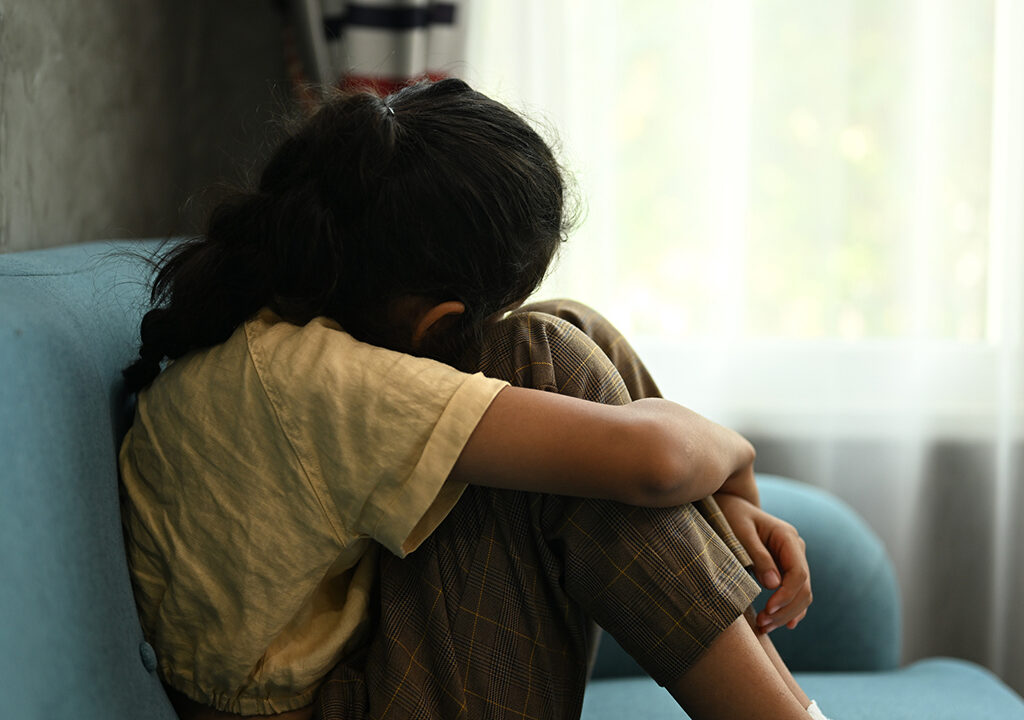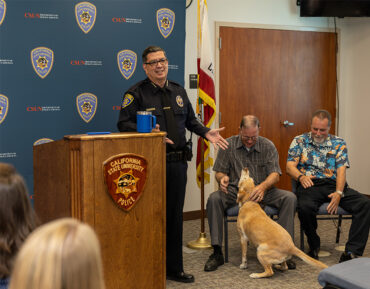
Media Contact: Carmen Ramos Chandler, carmen.chandler@csun.edu, (818) 677-2130
With the start of school just weeks away, teachers are already planning for the new academic year. Adding to their start-of-school list of concerns has been a summer filled with trauma for their students as the children grapple with the loss of family members to immigration raids and fears that when they get home, someone they love will be gone.
Shyrea Minton, chair of California State University, Northridge’s Department of Educational Psychology and Counseling, said trauma is a reality that the students, their teachers and everyone else who works in a school environment — whether elementary, middle or high school — will have to deal with in the coming weeks and months.
“There needs to be a recognition that there will likely be students in the classroom who are going through something, have experienced trauma — the loss of a parent, the loss of a sibling, the loss of safety,” Minton said. “Typically, when an individual experiences trauma, after they experience a lack of safety. Their eyes open and they realize ‘I am not as safe as I thought I was.’ For educators, it’s important to understand and recognize that inevitably you’re going to have students in your classroom who have experienced this type of trauma, specific around loss, and to recognize why it’s so important for you to be present for those students.”
Minton, who teaches in CSUN’s Michael D. Eisner College of Education, said it is not necessarily the role of a teacher to provide counseling for a student — “that’s why we have school counselors” — but they will likely be the first ones to notice when a student needs help.
She recommended that elementary school teachers create a safe space, “a calming corner,” where students can go when they are feeling overwhelmed by their emotions, “where they can take themselves out of that moment, calm down, recenter and then eventually rejoin the lesson.”
At the middle and high school level, she suggested that, before the semester begins, educators at those facilities designate a teacher, a counselor or someone else and a room each period where students can go when they are feeling overwhelmed.
“For the elementary and especially middle school students, they don’t necessarily have the ability to articulate what it is that they are experiencing,” Minton said. “The emotions that they have oftentimes can be bigger. They can be seen as just big emotions because they don’t know how to sit down and say specifically ‘this is what’s happening to me.’
“It’s important that a safe space is created and it’s communicated effectively to the students that they are free to use it when they need to,” she said. “These students are going to be feeling a loss of safety, a loss of protection, a loss of structure because a parent is gone or a sibling is gone. We see the news stories every day. It’s important for the students to know that when they are at school, they have dedicated people they can access at any point during the school day that help them reclaim, if you will, some sense of safety.”
Minton reminded teachers that they do not have to shy away from having conversations with their students about what is happening in the news, particularly if it affects those children and their loved ones directly.
“When we refuse to acknowledge what is happening to another person, this effectively shuts down any chance of connection, any chance of building a strong relationship, any chance of that person seeking you out for any type of support in the future,” she said. “Sometimes, it’s just listening. Even if you don’t have an answer to whatever is being said, the person, oftentimes, is not looking for you to try and fix the problem. They are just looking to be heard. Looking and wanting for someone to acknowledge that what happened was not okay and say, ‘I am sorry that happened to you.’ That goes a long way for students.”
That advice also applies to school colleagues, Minton said, pointing out that educators often come from the same communities as their students, and may be personally impact by the same traumatic experiences.
As they work to help their students and colleagues deal with trauma, Minton urged educators to not forget about taking some time for themselves.
“You have to care for yourself, that’s the bottom line,” she said. “We know burnout is a real thing. Compassion fatigue, that’s a real thing. Secondary traumatic stress, that’s a real thing. Our students are often coming to us, sharing the most horrible things. Or we have knowledge about things because we had to file a report or call parents to discuss something that happened in school. So, if we’re not paying attention to what’s happening for us emotionally, we’re going to get to a place where we are burnt out. We’re just exhausted. We’re unable to take on the suffering of others. That’s compassion fatigue. We’ve continued to push down our own emotions and we’ve not paid attention to what is happening to us internally.”
“Self-care is not a dirty word,” Minton continued. “We’ve gotten better at understanding that we must take care of ourselves, but there is still this view that self-care is bad because it involves prioritizing yourself. For some, that’s just a hard thing to do because that’s just not how we were raised. But to be in a role where you are regularly expected to have empathetic understanding, to understand the subjective reality of another person, to bear whatever is happening to that person, you have to be kind to yourself.”




Comments are closed.